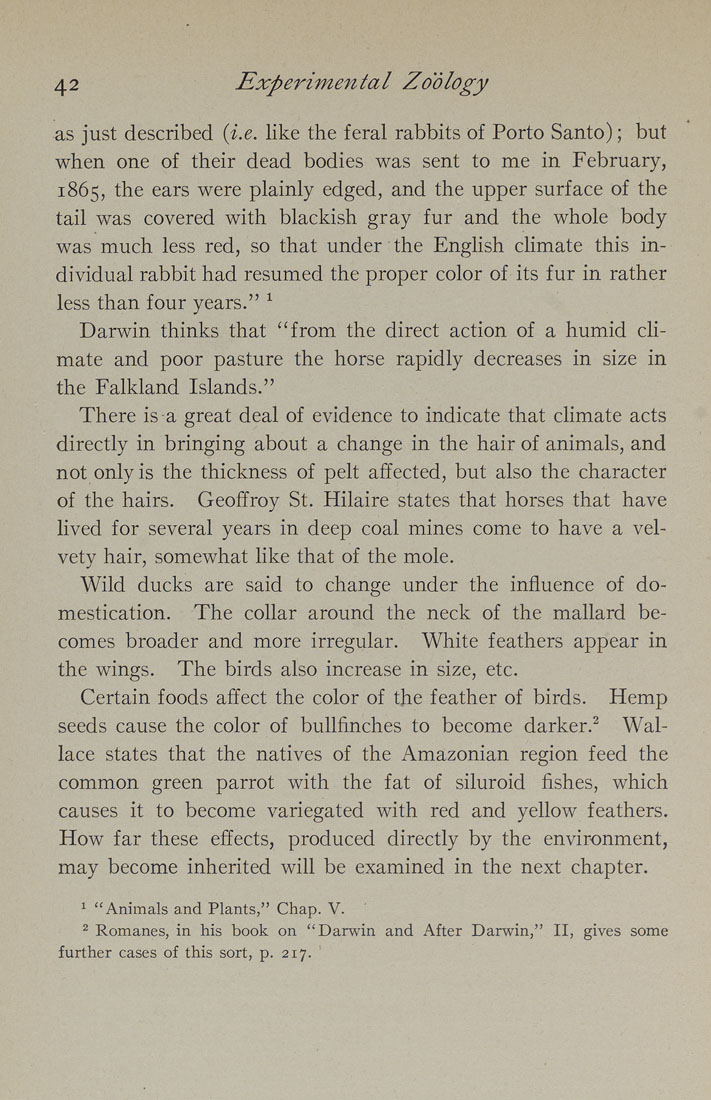42 Experim-ental Zoology
as just described {i.e. like the feral rabbits of Porto Santo); but
when one of their dead bodies was sent to me in February,
1865, the ears were plainly edged, and the upper surface of the
tail was covered with blackish gray fur and the whole body
was much less red, so that under the English climate this in¬
dividual rabbit had resumed the proper color of its fur in rather
less than four years." ^
Darwin thinks that "from the direct action of a humid cli¬
mate and poor pasture the horse rapidly decreases in size in
the Falkland Islands."
There is a great deal of evidence to indicate that climate acts
directly in bringing about a change in the hair of animals, and
not only is the thickness of pelt affected, but also the character
of the hairs. Geoffroy St. Hilaire states that horses that have
lived for several years in deep coal mines come to have a vel¬
vety hair, somewhat like that of the mole.
Wild ducks are said to change under the influence of do¬
mestication. The collar around the neck of the mallard be¬
comes broader and more irregular. White feathers appear in
the wings. The birds also increase in size, etc.
Certain foods affect the color of the feather of birds. Hemp
seeds cause the color of bullfinches to become darker.^ Wal¬
lace states that the natives of the Amazonian region feed the
common green parrot with the fat of siluroid fishes, which
causes it to become variegated with red and yellow feathers.
How far these effects, produced directly by the environment,
may become inherited will be examined in the next chapter.
' "Animals and Plants," Chap. V.
^ Romanes, in his book on "Darwin and After Darwin," II, gives some
further cases of this sort, p. 217.
|








